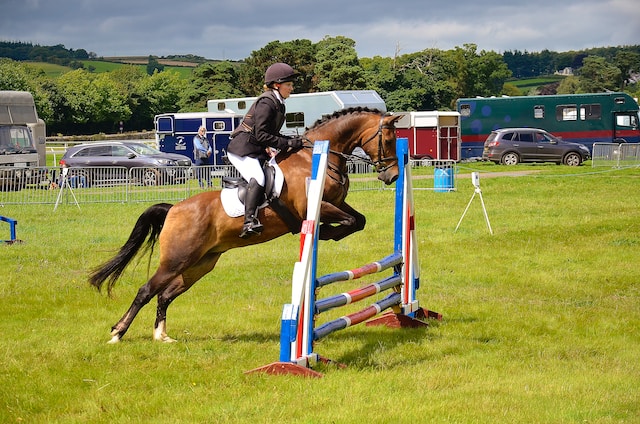An essential grid of ground poles can help your horse develop balance and a sense of rhythm. It also teaches them to stay straight to the fence to push off evenly from both sides of their body.
This exercise also challenges your horse to build a giant canter stride. Count their strides between the poles so they don’t overdo it.
Cost
The cost of horse jumps can vary depending on the height, design, and material used. For example, a show jumping course with a standard with shallow cups can be more expensive than one with more bottomless cups. A high-quality jump also tends to be more durable, requiring less maintenance.
Some jumps are designed to be more technical than others, making them more challenging for a horse. For example, a water tray creates a different reaction in a horse than a standard fence, requiring the animal to use more power to get over it.
Moreover, the type of obstacle you choose will affect the cost of your horse’s training and performance. For instance, a basic Crossrail is a pair of poles that form an X. This type of obstacle is helpful for beginners because it encourages them to count their strides before jumping. Additionally, it helps them develop a rhythm. Another famous jump is a Cavaletti, a small x-shaped standard with poles. These are great for schooling exercises and help teach a horse to stay straight.
Safety
When it comes to horse jumping, safety is vital. Good horsemanship is essential, as are well-built jumps and courses that encourage safe jumping. A breakthrough in jump design has introduced new, safer jump cups. Instead of steel, these cup adaptors are made of colored, molded HDPE that is both long-lasting and less likely to cause lacerations should a horse hit one.
Adding stripes to jump poles can make them more attractive and help desensitize a horse to the type of fences they will see in competition. However, it is essential to note that stripes may not seal properly and can leak paint if the pole gets wet.
Just like a wall caddy, another safety innovation is the new blocks, which are formed to be stacked to three heights. They also have a built-in shallow jump cup on top. These blocks are more easily cleaned than traditional wooden jumps and can be used in place of water trays.
Durability
Traditionally, horse jumps are made from wood such as cypress or oak. These are heavy and durable and can stand up to many hits. However, they also require much time and effort to build and maintain. This can put a strain on both the horse and the owner.
More recently, some jumps have been made from foam. These are cheaper and easier to construct than wooden rails. They are also more lightweight, which makes them more accessible for horses to maneuver around.
Whether you choose wooden or foam, you must paint your jump pieces with exterior paint. Multiple light coats are preferred, as they help the paint to adhere better and last longer. Also, always remember to let the jumps dry between coats. This will prevent runs and streaks. Durability is an essential factor in horse racing, and breeders should consider it when choosing stallions for breeding. Breeders should also be careful not to incentivize irresponsible breeding choices by paying bonuses for fast starts.
Style
When it comes to jumping poles, the style, and layout can affect your horse’s performance. For example, if your horse is uncomfortable with a specific type of jump, you should take the time to practice with it before trying to ride over it in competition.
A basic Crossrail jump is made of two crossed rails or poles. It’s an excellent exercise for beginners to learn to stay straight and balanced over obstacles. It also helps riders to develop their timing and rhythm.
For a more challenging exercise, try placing two poles several strides apart. This will require your horse to walk or trot between them. The key is to keep the distance between poles consistent, allowing the horse to feel the same pace and make a smooth turn.
A more advanced option is an oxer jump. This is a series of three, four, or even five straight poles set in a circle. This ideal exercise is for developing a precise turn and helping the horse focus on the next jump.





